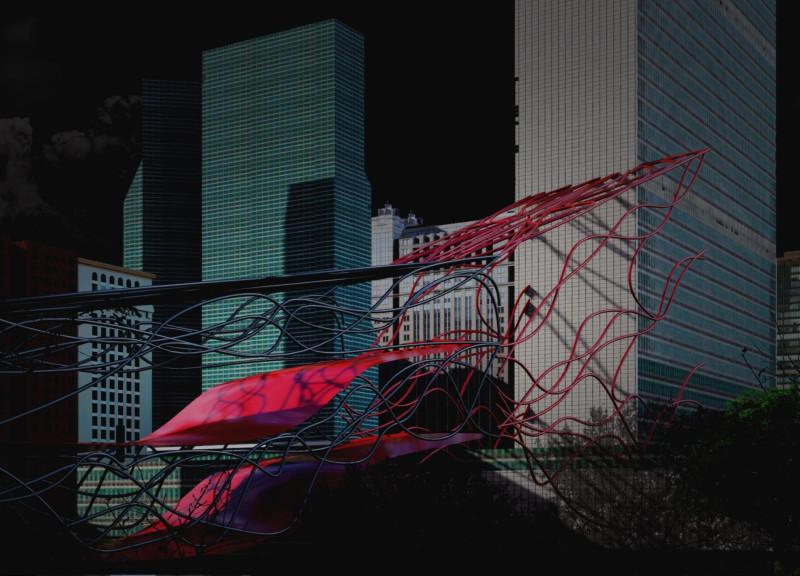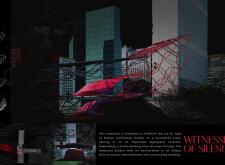5 key facts about this project
The memorial serves as a response to the global issue of human trafficking and is located in a significant diplomatic area. The design aims to bring attention to the hardships faced by victims while promoting awareness through its conceptual framework. It embodies themes of hope and resilience, visually representing a victim reaching out for help amid hardship.
Conceptual Framework
The design emphasizes human struggle and aspiration, captured within a fluid structure that moves away from traditional architectural shapes. This design choice fosters emotional engagement, inviting visitors to reflect on the challenging experiences of those impacted by human trafficking. The dynamic form stands in contrast to the more rigid structures around it, highlighting the memorial's importance and purpose.
Materiality
The presentation does not specify the materials used in the construction of the memorial. This focus on concept over material allows for a clear and emotional connection to the message. The absence of detailed material descriptions invites viewers to focus on the meaning behind the design, enhancing its emotional impact.
Spatial Interaction
The memorial interacts with its surroundings, creating a conversation between the new design and the existing environment. By embracing the context, it retains a unique identity while encouraging a connection with the space around it. This relationship enriches the visitor experience, prompting engagement with the memorial and the critical issues it addresses.
In a compelling design detail, the memorial culminates in a sweeping gesture that symbolizes the act of reaching out. This final element captures both vulnerability and hope, serving as a poignant reminder of the struggles faced by victims and underscoring the need for continued awareness and action.



















































